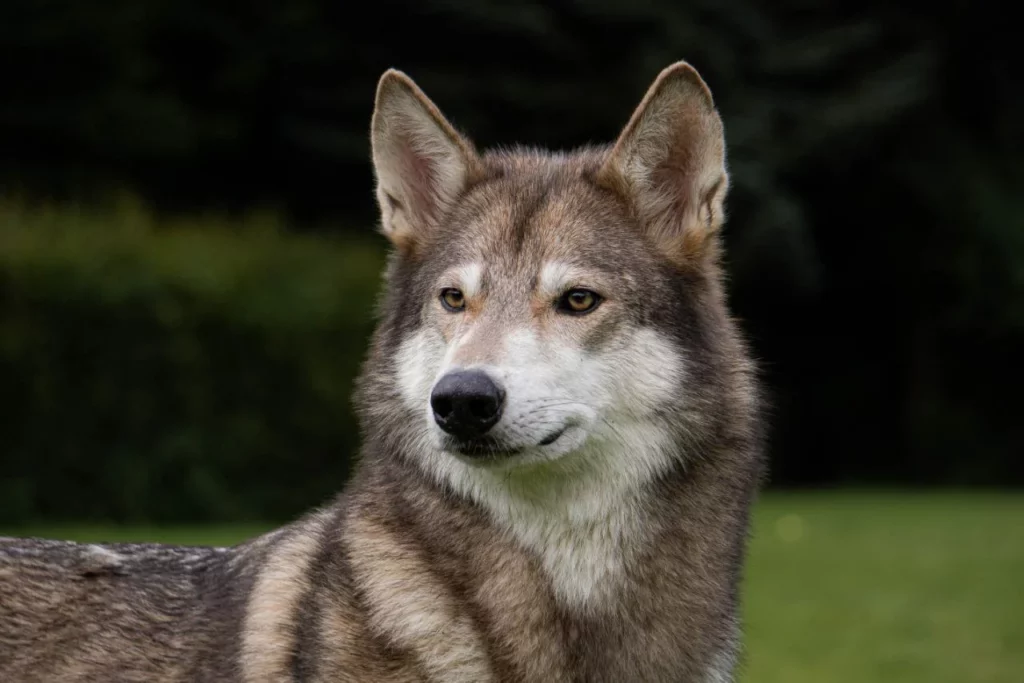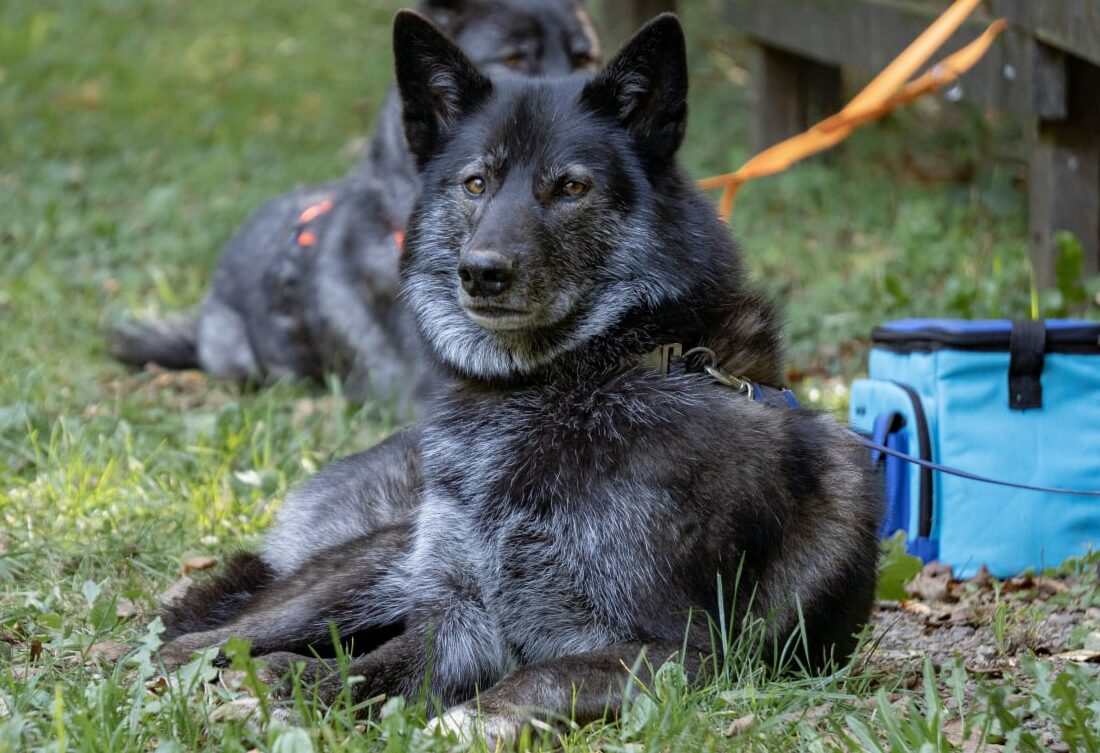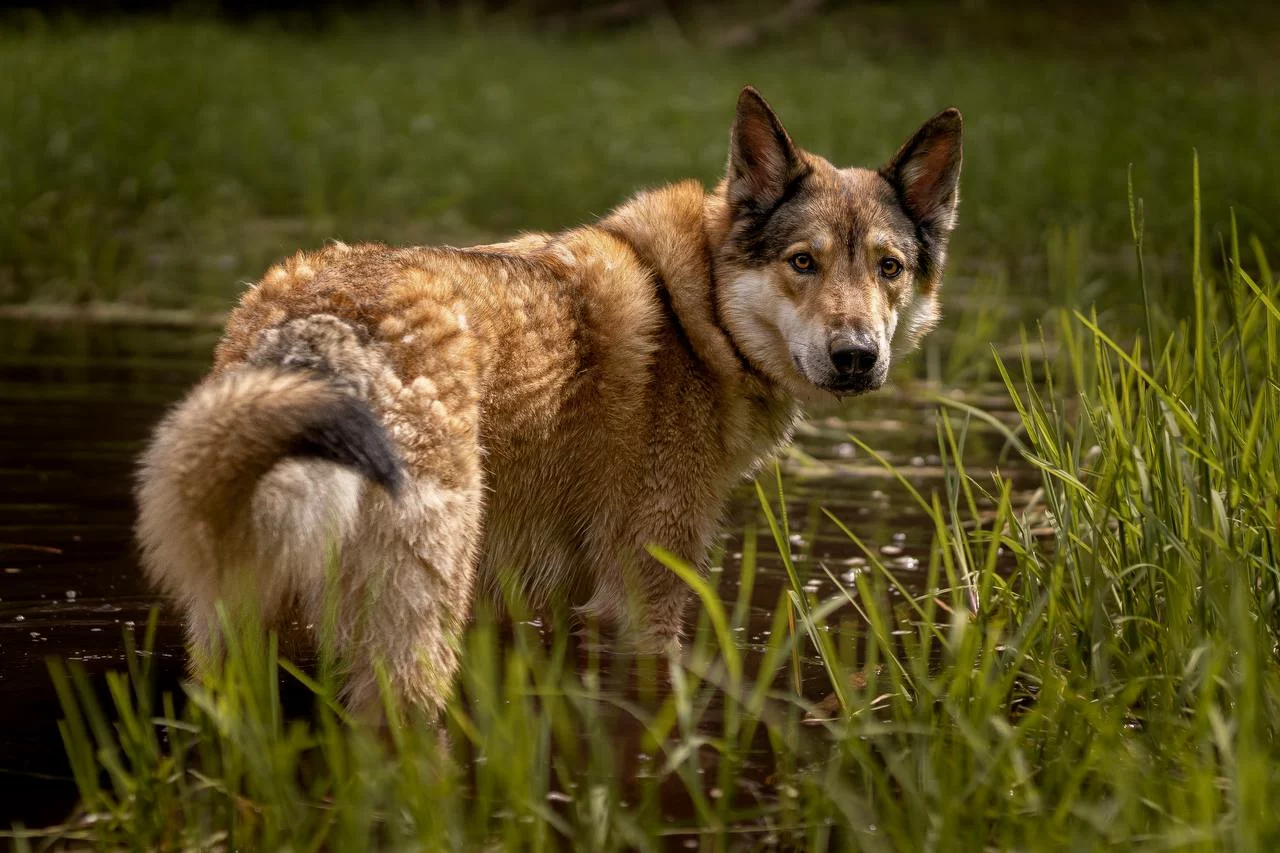Height
60 – 80cm

Wolfdog is a collective term for all dogs that have a proven wolf component. It does not matter which wolf subspecies or which dog breeds are involved. The majority of all Wolfdogs are mixed breeds, only a few have a breed affiliation.
In the USA, many wolfdogs have their origin on fur farms. There, wolves bred for fur production were mated with dogs to improve the fur quality and temperament of the animals. Mostly wolf-like dog breeds such as German Shepherds, Siberian Huskies or Alaskan Malamutes were used, but even today you can find breeds like Pyrenean Mountain Dog or Norwegian Elkhound in DNA tests. Over time, enthusiasts for wolf-dog hybrids also emerged, and private ownership and breeding for private ownership gradually became the norm.
In Europe, wolves were originally mainly crossed into German Shepherds in order to improve them in one way or another. This ultimately resulted in the Saarloos Wolfdog and the Czechoslovakian Wolfdog.
Around the year 2000, several Wolfdogs were imported from the USA to Europe for the first time and Wolfdogs also became more popular in Scandinavia and the UK, which is where the Tamaskan, among others, originated.
The majority of Wolfdogs in Europe and the USA are still mongrel dogs without uniformity or associations. The only generally accepted rule is a subdivision into contents, i.e. the wolf percentage in the dog. In German-speaking countries, this is as follows:
Wolfdogs vary in temperament from dog to dog due to the different breed compositions, and even within a litter there can sometimes be massive differences. Accordingly, it is important to do your research on the parentage of a puppy. The proportion of wolf blood is a relatively good indicator of how many wild animal behaviours, such as scepticism and insecurity in new situations, a Wolfdog displays. As a rule of thumb, the higher the proportion of wolf blood, the more expertise and time is needed to get the dog used to everyday human life.
Depending on which dog breeds and wolf subspecies were crossed, what was considered in the breeding line, what the character of the parents is, how the puppies were raised and how the owner builds on this foundation, Wolfdogs can cover the entire spectrum from ‘normal dog’ to ‘wild wolf’. Genetics, socialisation and especially the commitment of the owner are definitely key factors here.

Wolfdogs vary in appearance from dog to dog due to the different wolf and breed compositions; even within a litter, there are sometimes massive differences.
Generally speaking, the appearance is closer to the wolf the more wolf the dog has. Apart from that, the appearance depends very much on the respective genetics of the parent animals and there are no limits.
Due to the various crossbreeding of dog breeds and their genetics, there is a wide range of colours and visual characteristics that can occur today. While most Wolfdogs are classically agouti, black or white, there are also Wolfdogs in dilute, liver, merle and other colours. While most Wolfdogs have yellow to light brown eyes, colours such as dark brown, blue or two-coloured eyes also occur. Fur can also vary from very short to classic double fur to almost wool-like long hair. Size and weight also vary considerably. If you have an optical ideal, you should make sure that the parents are tested accordingly and that you can understand their genetics.

Since there are no uniform rules for health examinations of Wolfdogs or a common point of contact for the documentation of illnesses, little is known about the general health of all Wolfdogs. Any disease that can occur in the crossbred breeds can also occur in the respective Wolfdog. Unfortunately, only relatively few Wolfdog breeders take this topic seriously and test their dogs.
Wolfdogs do not normally require any special grooming.
They should be brushed regularly only during the moulting season to remove loose hairs.
Crossbreeding has led to an increase in the number of long-haired Wolfdogs. These dogs‘ fur requires a bit more grooming care than that of the standard short-haired variety, and should be brushed regularly to prevent tangles.
05.01.2020
Wolfdog14.11.2022
Wolfdog